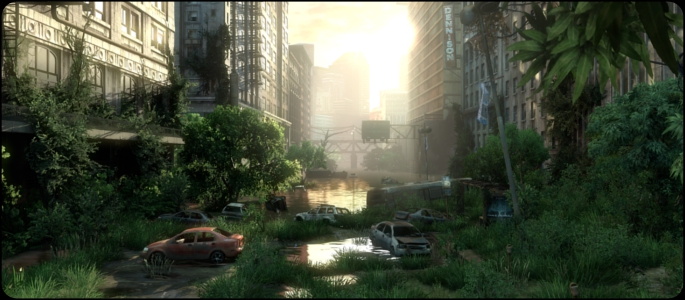Doomsayers have predicted the end of days countless times, with the world seemingly perpetually on the brink of all out war, rising sea levels and bio-terrorism further fueling fears of the apocalypse. While such a bleak future seems unlikely, humanity’s fate is uncertain, so we’ve compiled a list of what you should know in case of an apocalyptic event like in The Last of Us.
Preparing for dangerous times is always a good idea, with more common events like tornadoes, floods or power cuts an ever-present possibility, making general preparation a possibly life-saving endeavor.
1) Water:
In any protracted disaster, water is key to survival. People are generally said to only be able to survive 3 days without water, but in milder climates healthy people have been know to survive for several days longer. Of course, being without water for more than just a day is something that you should try to avoid – if you lose 2.5% of your body weight from water loss, you can lose a full 25% of your efficiency as your blood becomes thicker and harder to pump. Decreased physical and mental abilities could be devastating in a survival situation, so stockpile lots of water – both easy to carry bottles, as well as larger storage units of water.
The Federal Emergency Management Agency (FEMA) recommends that we should have at least a two-week emergency water supply on hand at all times, with enough water for a gallon per person per day, but exact levels vary depending on age, physical health or weight.
If water supplies run low, be wary of drinking unclean water – try to drink from running streams and rivers, rather than still water. Use a filter (even a shirt is preferable to nothing) to drain out silt, and use water purification tablets or iodine if possible. If you can, boil the water, with 72hours.org recommending that you bring the water to a rolling boil and maintain for 3-5 minutes. Add 8 drops (1/8 teaspoon) of bleach per gallon of water to disinfect clear water, and 16 drops (1/4 teaspoon) per gallon for cloudy water. Use regular bleach (5.25% percent sodium hypochlorite) rather than the “ultra” or “color safe” bleaches.
Shake or stir and then let stand 30 minutes.
2) Food:
Food isn’t as immediate a concern as water, with humans able to survive weeks or months without sustenance, as the body feeds on itself. But food can also be a good source of moisture, depending on what it consists of. If water is scarce, heavy or salty food should be avoided, as it will make things worse. If you have no water, only eat food with very high water content, as the normal digestion process requires, and uses up, water.
‘Meals, Ready-to-Eat’ (MREs) are self-contained, individual field rations in lightweight packaging used by the US military in times where more organized food distribution is not available. As they are designed for servicemen, the packaging is tough, and able to withstand a parachute drops1,250 ft (380m), and non-parachute drops of 98ft (30m), making them useful on-the-go foods in times of emergency. They have a shelf life of at least three and a half years at 81°F/27°C and nine months at 100°F/38°C, which also means they will last you some time. However, MREs are heavier than freeze-dried foods due to water content, and can be expensive – the Department of Defense requires that MREs have “U.S. Government Property, Commercial Resale is Unlawful” printed on their side, but there is no actual law forbidding it, and they can be found online. MREs also have the added treat of self heating, which can be a wonderful psychological boost in times of distress.
But with a main dish, side dish, dessert and more, MREs can be seen as a bit of a luxury. Freeze-dried food has a longer shelf life – of around 25 years, but manages to last so long so to the lack of moisture. This means you’ll have to add water to rehydrate the food. Having supplies of supplements is also recommended in long-term disaster situations, so that you don’t suffer from malnutrition or vitamin deficiencies.
Be sure to plan ahead what you eat, consuming food that expires sooner first. Fresh food should be eaten first, but be mindful of the fact that even tins can expire in a few years. Food poisoning can be devastating in a world without medical facilities, so be cautious about what you eat.
3) Survival pack:
In the case of an anarchic disaster, zombie/monster-fungus outbreak or evacuation from nuclear fallout or tornado, staying put with prepared supplies might not be the best of ideas. Always be prepared to leave immediately, with a pack of necessary survival equipment on hand. Be sure to have:
- Fire and water proof light weight carrier bag
- Water
- Water purification tablets (and if you have space portable water purification devices)
- Food such as MREs
- LED flashlight (and batteries)
- First aid kit (see below)
- Two-way radios if there are multiple people in the party
- Binoculars
- Knife
- Firestick/firesteel, matches and a lighter
- Weapons (see below)
- Rope
- Wind up radio
- Compass and map
- Depending on climate – sleeping bag, waterproof clothes, insulation sheet and a ground sheet
- Depending on disaster – face masks and gas masks for infectious diseases and iodine in nuclear fallout cases
- For contagious disasters – disinfectant
It’s important that the bag is light, fits well and doesn’t restrict movement in times of fight or flight. Objects of sentimental value will have to be left out unless absolutely tiny.
Ensure that things you might need to get to quickly – weapons or binoculars – are easy to reach.
4) Weapons:
In most disaster situations, society devolves, with what’s left of mankind having an ‘every man for himself’ attitude. To protect yourself, your family or your supplies, it’s important to be armed. In countries that allow them, guns can be a useful deterrent, scaring less armed individuals away without you even needing to fire a shot. Of course, be sure to stock up on ammo as it will be hard to acquire after any apocalyptic event.
If you’re up against something else, like zombies, a gun might not be the best idea, and only used as a last resort. In The Last of Us, the creatures seem to be attracted by sound, so a loud gunshot could attract enemies from literally miles around.
A chainsaw, while a popular favorite in games and films, is actually one of the worst weapons around. Chainsaws require fuel, are incredibly heavy and unwieldy and spray blood in all directions – which could be particular harmful for contagious events.
Light weapons are far more useful, so don’t stock up on sledgehammers and concrete blocks after playing Dead Rising. Remember, you will have to carry the weapon around all day, and possibly swing/jab it hundreds of times in a confrontation – note how Ellie uses a small knife in the The Last of Us trailer. But, again, don’t go too light depending on your enemy. Zombies won’t flinch if you stab them in the chest, so in the case of any walking dead use a blunt object like a baseball bat that has some stopping power.
Have more than one easy-to-reach weapon in case your primary weapon gets stuck in an enemy, or breaks.
Weapons like guns, crossbows and bows can also be used for hunting for food, but be sure to read up on how to properly prepare freshly killed animals if you’re not sure.
5) Medicine:
Keep a First Aid kit with you at all times, as well as having more medical supplies at your shelter if you have one. If you have any preexisting medical conditions also stockpile plentiful supplies of any medicine you may need to take – but be warned: medicine expires. If possible, have backup plans for what you will do once all the medicinal supplies have run out.
6) Shelter:
Depending on disaster, make sure that your shelter is safe from whatever threats might be out there. Of course, protection from weather is important, so that you can sleep warm and comfortably, your food and clothes keep dry and you don’t get infections from constant dampness.
Not being seen is also important, as that means that enemies won’t even try to invade your shelter to get at your supplies/bite you. Most survival gear is fluorescent and bright to make it easy for rescuers to find stranded hikers, so be cautious about what survival gear your buy.
Barricades – make sure that it’s difficult for enemies to enter your dwelling place, and place old cans, stick and bits of loose rubbish that will make a sound as someone moves across them. Try to funnel attackers down a pathway that means that you only need to confront one enemy at a time.
Escape route – don’t trap yourself by creating a shelter with only one exit. Have a hidden escape route so that if you are overwhelmed, there is still a way out.
7) Meetup:
If you have a job, or regularly leave the house, it’s unlikely that you will be with your loved ones when disaster strikes. With communication lines likely to falter as record amounts of people try to call each other, and later power stations fail, it might not be possible to get in contact with each other. Decide where to meetup – one location in town (like your house) and one outside of town in case of mandatory evacuation.
8 ) Escape:
If barricading yourself in your home is not an option, make sure you have multiple evacuation routes planned – Google Maps and GPS will quickly go down. If you can drive, be wary that during a mass evacuation roads will quickly become jammed, so ensure you have other routes, and an option to go offroad, possibly with bikes. If you can’t drive, try to ensure you have a neighbor or relative who will be able to give you a lift.
Do you think that you are well prepared enough to be one of The Last of Us? Let us know in the comments below.








